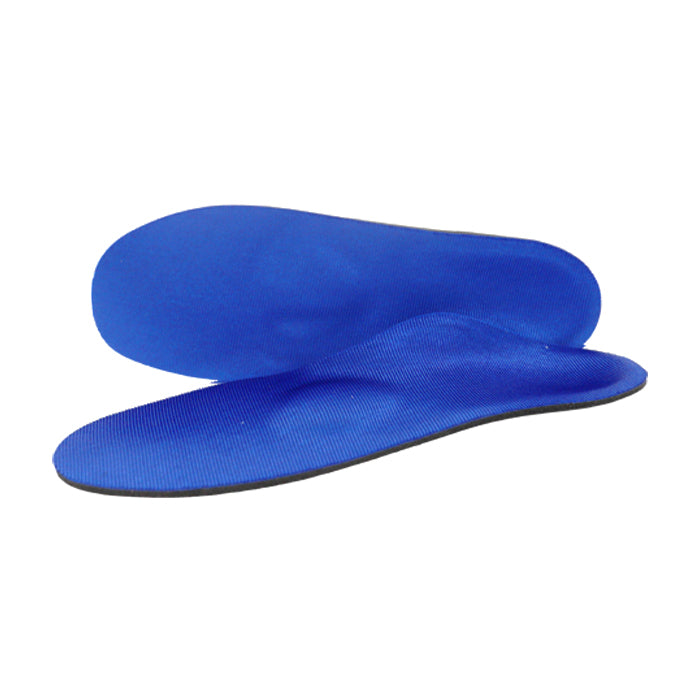The Best Shoes for Fallen Arches in 2022
What are Fallen Arches?
Fallen arches occur when the tendons in our foot and lower leg are not able to provide stability and support for the arch of the foot. Others develop flat feet as a result of pregnancy, aging, obesity, or a health condition such as rheumatoid arthritis or diabetes, according to the American Academy of Orthopaedic Surgeons (AAOS).
Fallen Arches Symptoms
- Pain along the inside of the foot and ankle, commonly associated with swelling of the area
- Pain that is worse with activity, especially high-intensity or high-impact activities, such as running
- Trouble walking or standing for a long time
- Pain on the outside of the ankle. When the foot collapses, the heel bone may shift to a new position outwards. This can put pressure on the outside ankle bone

Best Shoes for Fallen Arches (PTTD)
free foot analysis
We carry a wide variety of shoes and sandals for PTTD which are recommended by a podriatrist. Many of the supportive shoes and sandals we carry have great support and accommodate orthotics which is very helpful for PTTD. The best shoes for PTTD support the foot have stiff soles. Additionally, shoes for PTTD usually have a steel or plastic shank for additional support. Shoes for PTTD should have a very rigid sole and a stiff heel counter.
Best Arch Supports for Fallen Arches (PTTD)
We have a wide variety of arch supports for PTTD. The best arch support for PTTD will control pronation, and be adjustable to meet your individual needs. The best insoles for PTTD usually are custom molded and have rear foot postings to help control the amount the arch falls when you take a step. We have over the counter arch supports and custom molded orthotics which helps reduce the pain associated with PTTD.
|
Sovella S1000 Max Support Orthotic Arch Support |
Sovella S3000 |
S3500 COMFORT W/MET |
|
Sovella Dress Arch Supports |
Sovella Dress Arch Supports with Met Pad |
Make an appointment today with a specialist to find out which PTTD arch support is best for you!
Where to buy arch supports and shoes for fallen arches
At Lucky Feet Shoes, we carry a wide variety of arch supports and shoes for fallen online and in Southern California. We fit customers with arch supports and shoes for fallen arches in Orange County, Inland Empire, Riverside, Temecula and Los Angeles County. Our stores in Rancho Cucamonga, Riverside, San Dimas, Anaheim Hills, Temecula, La Quinta, Palm Desert, Costa Mesa, and Long Beach. We invite you to stop by for a free foot analysis and try our shoes for fallen arches. In addition, we have a large selection of comfort shoes, wide shoes, walking shoes, running shoes, arch supports, and custom orthotics!
Come visit one of our locations today!
How are fallen arches caused?
An acute injury, such as from a fall, can tear the posterior tibial tendon or cause it to become inflamed. The tendon can also tear due to overuse. For example, people who do high-impact sports, such as basketball, tennis, or soccer, may have tears of the tendon from repetitive use. Once the tendon becomes inflamed or torn, the arch will slowly fall (collapse) over time.
Posterior tibial tendon dysfunction is more common in women and in people older than 40 years of age. Additional risk factors include obesity, diabetes, and hypertension.
Posterior tibial tendon dysfunction is one of the most common problems of the foot and ankle. It occurs when the posterior tibial tendon becomes inflamed or torn, and can result in flatfoot.

The posterior tibial tendon is one of the most important tendons of the leg. A tendon attaches muscles to bones, and the posterior tibial tendon attaches the calf muscle to the bones on the inside of the foot. The main function of the tendon is to hold up the arch and support the foot when walking.
The posterior tibial tendon serves as one of the major supporting structures of the foot, helping it to function while walking. Posterior tibial tendon dysfunction (PTTD) is a condition caused by changes in the tendon, impairing its ability to support the arch. This results in flattening of the foot.

PTTD is often called “adult acquired flatfoot” because it is the most common type of flatfoot developed during adulthood. Although this condition typically occurs in only one foot, some people may develop it in both feet. PTTD is usually progressive, which means it will keep getting worse, especially if it isn’t treated early.
Symptoms of PTTD
The symptoms of PTTD may include pain, swelling, a flattening of the arch, and an inward rolling of the ankle. As the condition progresses, the symptoms will change.
For example, when PTTD initially develops, there is pain on the inside of the foot and ankle (along the course of the tendon). In addition, the area may be red, warm, and swollen.
Later, as the arch begins to flatten, there may still be pain on the inside of the foot and ankle. But at this point, the foot and toes begin to turn outward and the ankle rolls inward.
As PTTD becomes more advanced, the arch flattens even more and the pain often shifts to the outside of the foot, below the ankle. The tendon has deteriorated considerably and arthritis often develops in the foot. In more severe cases, arthritis may also develop in the ankle.
How are fallen arches treated?
Most patients can be treated without surgery using orthotics, supportive shoes and braces.
Because of the progressive nature of PTTD, early treatment is advised. If treated early enough, your symptoms may resolve without the need for surgery and progression of your condition can be arrested.
In contrast, untreated PTTD could leave you with an extremely flat foot, painful arthritis in the foot and ankle, and increasing limitations on walking, running, or other activities.
In many cases of PTTD, treatment can begin with non-surgical approaches that may include:
- Orthotic devices or bracing. To give your arch the support it needs, your foot and ankle surgeon may provide you with an ankle brace or a custom orthotic device that fits into the shoe.
- Immobilization. Sometimes a short-leg cast or boot is worn to immobilize the foot and allow the tendon to heal, or you may need to completely avoid all weight-bearing for a while.
- Physical therapy. Ultrasound therapy and exercises may help rehabilitate the tendon and muscle following immobilization.
- Medications. Nonsteroidal anti-inflammatory drugs (NSAIDs), such as ibuprofen, help reduce the pain and inflammation.
- Shoe modifications. Your foot and ankle surgeon may advise changes to make with your shoes and may provide special inserts designed to improve arch support.
The type of treatment will depend on the stage of PTTD present. There are four stages of posterior tibial tendon dysfunction.
Stage I – The posterior tibial tendon is inflamed but has normal strength. There is little to no change in the arch of the foot. The patient can still perform a single-limb heel rise and has a flexible hindfoot. Orthotic treatment options include modified off the shelf inserts and custom molded orthotics.
Stage II – The tendon is partially torn or shows degenerative changes and as a result loses strength.There is considerable flattening of the arch without arthritic changes in the foot. The patient cannot perform single-limb heel rise. Pain is now present on the lateral aspect of the ankle. Orthotic treatment is similar as that in stage I, with the addition of more rigid arch supports and wedging.
Stage III – Results when the posterior tibial tendon is torn and not functioning. As a result the arch is completely collapsed with arthritic changes in the foot. A solid ankle AFO is suggested in conjunction with a modified orthopedic shoe.
Stage IV – Is identical to stage three except that the ankle joint also becomes arthritic. A rigid AFO and modified orthopedic shoe is required.
When Is Surgery Needed for Fallen Arches (PTTD)?
In cases of PTTD that have progressed substantially or have failed to improve with non-surgical treatment, surgery may be required. However in many cases, specialty shoes and orthotics can help you with your fallen arches.
Having to wear constrictive shoes can cause a lot of side effects like foot and toenail fungus. So be sure to buy shoes that fit your feet just right; especially if you have foot conditions like flat feet, fallen arches, etc. Check out Lucky Feet Shoes for more information.













